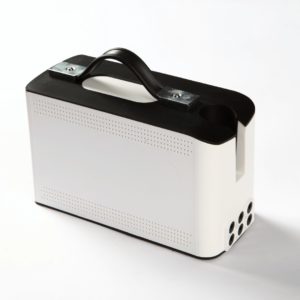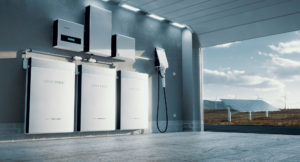Proper maintenance of solar batteries is essential for maximizing their lifespan and ensuring optimal performance. This article will explore the various aspects of solar battery maintenance and provide valuable tips to help you keep your battery bank in excellent condition.
Contents
- 1 Key Takeaways
- 2 Understanding Solar Batteries and Their Components
- 3 Regular Maintenance Tasks for Solar Batteries
- 4 Maintaining Battery Bank Connections
- 5 Proper Handling and Storage of Lead-Acid Batteries
- 6 Watering and Electrolyte Maintenance for Lead-Acid Batteries
- 7 Preventing Sulfation and Extending Battery Life
- 8 Environmental Factors and Solar Battery Maintenance
- 9 Recycling and Disposal of Solar Batteries
- 10 Experience Solar Excellence with Us!
- 11 Conclusion
Key Takeaways
- Proper maintenance of solar batteries, including regular watering, monitoring charge levels, and preventing sulfation, is crucial for ensuring their longevity and optimal performance.
- Maintaining secure connections within the battery bank, handling and storing lead-acid batteries properly, and considering environmental factors are essential for the efficient operation of solar battery systems.
- Responsible recycling and disposal of old batteries are vital in promoting sustainability and minimizing environmental impact.
Understanding Solar Batteries and Their Components
Solar batteries play a vital role in storing and delivering the energy generated by solar panels. They come in different types, such as lead-acid and lithium-ion batteries, each with its own set of characteristics. These batteries consist of various components, including terminals, electrolytes, and cells/modules that work together to store and release energy through chemical reactions.
Lead-acid batteries are commonly used in solar power systems due to their affordability and reliability. They contain lead plates submerged in an electrolyte solution, usually sulfuric acid. On the other hand, lithium-ion batteries offer higher energy density and longer lifespan but come at a higher cost. They use lithium-based compounds as the active material and operate through a different chemical process.
Understanding the intricacies of solar batteries and their components is essential for effectively maintaining and optimizing their performance. By understanding the different battery types and their specific characteristics, you can make informed decisions about maintenance and ensure the longevity of your solar battery system.
Regular Maintenance Tasks for Solar Batteries
Regular maintenance is crucial for ensuring solar batteries’ longevity and optimal performance. By incorporating a routine maintenance schedule, you can identify and address issues promptly, preventing potential damage and maximizing the lifespan of your battery bank. Here are some key maintenance tasks to consider:
- Monitoring Battery Charge Levels: Regularly check your solar batteries’ state of charge (SOC). Monitoring the voltage and SOC provides insights into the battery’s health and helps prevent over-discharge or overcharge situations that can degrade battery life.
- Checking and Cleaning Battery Terminals: Inspect the battery terminals regularly for signs of corrosion, loose connections, or dirt buildup. Corrosion can hinder the flow of electricity and lead to voltage loss. Clean the terminals using a mixture of baking soda and water, then rinse with clean water to remove any acid residue and ensure a secure electrical connection.
- Inspecting for Signs of Damage or Corrosion: Perform visual inspections of the battery bank to identify any physical damage, such as cracks or leaks. Damage can lead to electrolyte leakage and compromise the battery’s performance. Promptly address any issues by repairing or replacing damaged batteries.
- Testing and Replacing Faulty Cells or Modules: Regularly test individual battery cells or modules to identify weak or faulty components. Testing methods like load or impedance testing can help detect internal issues. Replace any faulty cells or modules to maintain the overall efficiency and performance of the battery bank.
- Maintaining Proper Ventilation for Battery Banks: Adequate ventilation is crucial to dissipate hydrogen gas produced during the charging process. Hydrogen gas is highly flammable, and its accumulation can lead to safety hazards. Ensure the battery bank is properly ventilated to prevent the buildup of hydrogen gas and maintain a safe operating environment.
By performing these regular maintenance tasks, you can identify potential problems early, prolong the life of your solar batteries, and ensure reliable and efficient energy storage.

Maintaining Battery Bank Connections
Maintaining proper connections within the battery bank is essential for optimal performance and safety. Loose or corroded connections can result in voltage loss, poor charging/discharging efficiency, and increased resistance. Here are some key considerations for maintaining battery bank connections:
- Secure and Tight Connections: Regularly inspect and ensure all connections within the battery bank are securely and properly tightened. Loose connections can lead to poor electrical conductivity and increase the risk of electrical arcing or overheating.
- Cleaning and Treating Battery Terminals: Clean the battery terminals regularly to remove any corrosion or buildup that may hinder electrical conductivity. Use baking soda and water to neutralize the acid residue and gently scrub the terminals. Rinse with clean water and dry thoroughly before reattaching the battery cables.
- Protecting Against Corrosion and Oxidation: After cleaning the battery terminals, apply a thin layer of petroleum jelly or a specialized terminal protector. This protective coating helps prevent corrosion and oxidation, ensuring reliable and efficient connections.
- Using Insulated Tools for Maintenance: Always use insulated tools when performing maintenance tasks on the battery bank. Insulated tools minimize the risk of accidental short circuits or electrical shocks, providing an added layer of safety during maintenance procedures.
By following these practices, you can maintain secure connections within your battery bank, minimize resistance, and optimize the overall performance of your solar battery system.
Proper Handling and Storage of Lead-Acid Batteries
Lead-acid batteries are widely used in solar power systems for their affordability and reliability. Proper handling and storage of lead-acid batteries are crucial to maintain their performance and prevent accidents. Here are important guidelines for handling and storing lead-acid batteries:
- Precautions When Handling Lead-Acid Batteries: Wear protective gloves and goggles to protect yourself from acid spills and fumes when handling lead-acid batteries. Avoid dropping or mishandling batteries, which can damage the internal components and lead to leaks or malfunctions.
- Safety Measures for Charging and Discharging: Follow proper safety measures during the charging and discharging. Ensure the charging equipment is compatible with lead-acid batteries and follows the manufacturer’s recommendations. Avoid overcharging or discharging batteries beyond their recommended limits to prevent damage and maximize lifespan.
- Storing Lead-Acid Batteries in a Suitable Environment: Lead-acid batteries should be stored in a cool, dry, and well-ventilated area. Extreme temperatures can negatively impact battery performance and lifespan. Avoid exposing batteries to direct sunlight or freezing temperatures. Ensure proper ventilation to dissipate any gases that may be released during charging.
- Dealing with Spills or Leaks Properly: In the event of an acid spill or leak, take immediate action to minimize damage and ensure safety. Use appropriate protective equipment, such as gloves and goggles, when handling spilled electrolytes. Neutralize spills with baking soda and water mixture, following proper safety procedures. Dispose of contaminated materials responsibly, following local regulations.
By adhering to these guidelines, you can safely handle and store lead-acid batteries, prolonging their lifespan and ensuring safe operation within your solar power system.

Watering and Electrolyte Maintenance for Lead-Acid Batteries
Watering lead-acid batteries is critical to ensure their proper operation and longevity. Here are important considerations for watering and maintaining the electrolyte levels in lead-acid batteries:
- Understanding the Importance of Watering: Lead-acid batteries require regular watering to maintain the appropriate electrolyte levels. The electrolyte serves as the medium for chemical reactions within the battery, and insufficient electrolytes can hinder the battery’s performance.
- How to Water Lead-Acid Batteries Safely: Before watering, ensure you have the necessary safety equipment, such as gloves and goggles, to protect yourself from potential acid exposure. Carefully remove the vent caps from the battery and inspect each cell’s electrolyte level. Add distilled water to cells with low electrolyte levels, ensuring the plates are fully submerged.
- Testing and Adjusting Electrolyte Levels: Regularly test the electrolyte’s specific gravity and acidity (pH) using a hydrometer or a suitable testing device. The specific gravity indicates the state of charge and can help identify imbalances between cells. Adjust the electrolyte levels by adding distilled water or sulfuric acid as necessary, following the manufacturer’s guidelines and recommendations.
- Using Distilled Water and Avoiding Overfilling: It is crucial to use distilled water when watering lead-acid batteries. Tap water may contain impurities and minerals that adversely affect the battery’s performance. Additionally, avoid overfilling the cells, as excessive electrolyte levels can result in electrolyte overflow during charging. Maintain the electrolyte levels within the designated range recommended by the battery manufacturer.
Preventing Sulfation and Extending Battery Life
Sulfation is a common phenomenon that can occur in lead-acid batteries and significantly impact their performance and lifespan. Here are key strategies to prevent sulfation and extend the life of your solar batteries:
- Understanding Sulfation and its Impact on Battery Performance: Sulfation occurs when lead-acid batteries are left in a discharged state for an extended period or experience shallow depth of discharge. It leads to the formation of sulfate crystals on the battery plates, reducing their ability to store and deliver energy effectively.
- Techniques to Prevent Sulfation: One of the most effective ways to prevent sulfation is to maintain your batteries as fully charged as possible. Regularly monitor the state of charge and recharge the batteries promptly to avoid deep discharge. Implementing an appropriate battery management system or charge controller with features like equalizing charging can also help prevent sulfation by applying controlled overcharging.
- Equalizing Charging for Lead-Acid Batteries: Equalizing charging intentionally overcharges the batteries to address imbalances and remove sulfation. This procedure helps equalize the charge among the battery cells and break down any sulfate crystals that may have formed. However, following the manufacturer’s recommendations and guidelines for proper equalizing charging to prevent battery damage is important.
- Proper Discharging and Recharging Cycles: Following proper discharging and recharging cycles can also help extend battery life and prevent sulfation. Avoid shallow discharges and recharge the batteries fully after each use. Deep discharges, on the other hand, should be minimized as they can contribute to sulfation. Maintaining a consistent and appropriate charging routine helps prevent sulfate buildup and ensures the batteries are ready for reliable energy storage.
By implementing these strategies, you can reduce the risk of sulfation and maximize the lifespan and performance of your lead-acid batteries in the solar power system.

Environmental Factors and Solar Battery Maintenance
Environmental conditions play a crucial role in the performance and maintenance of solar batteries. Consider the following factors to ensure optimal operation and longevity:
- Temperature Considerations and Battery Performance: Extreme temperatures can affect battery performance and lifespan. High temperatures can accelerate battery degradation, while extremely cold temperatures reduce battery efficiency. Ensure that the battery storage location maintains an appropriate temperature range. Provide insulation or ventilation to protect the batteries from excessive heat or cold.
- Protecting Batteries from Extreme Heat or Cold: Shield the batteries from direct sunlight and keep them away from heat sources that can cause excessive temperature rise. Consider insulating the battery bank in cold climates to minimize heat loss and maintain optimal operating temperatures. Battery performance can be enhanced by operating within the recommended temperature range specified by the manufacturer.
- Dealing with Humidity and Moisture Issues: Excessive humidity and moisture can lead to corrosion and other electrical issues. Ensure that the battery storage area has proper humidity control. Address any moisture-related issues promptly by utilizing moisture-absorbing materials or dehumidifiers. Regularly inspect the battery bank for signs of corrosion and take appropriate measures to prevent or mitigate it.
Considering these environmental factors and implementing appropriate measures will help maintain the performance and reliability of your solar batteries under various weather conditions.
Recycling and Disposal of Solar Batteries
Responsible disposal and recycling are crucial when solar batteries reach the end of their lifespan or become defective. Consider the following guidelines for recycling and proper disposal of solar batteries:
- Responsible Disposal of Old or Defective Batteries: Improper disposal of batteries can harm the environment and pose risks to human health. Follow local regulations and guidelines for properly disposing of old or defective solar batteries. Many regions have specific recycling programs or designated collection centers for battery recycling. Check with local waste management authorities or recycling facilities to find the appropriate disposal methods available in your area.
- Proper Recycling Methods for Lead-Acid and Lithium-Ion Batteries: Lead-acid and lithium-ion batteries require specialized recycling due to their different chemical compositions. Lead-acid batteries should be recycled to recover valuable materials such as lead and sulfuric acid. Lithium-ion batteries contain valuable metals like lithium, cobalt, and nickel that can be reclaimed through proper recycling. Look for recycling facilities that handle these batteries and ensure their proper disposal to minimize environmental impact.
By adhering to responsible recycling and disposal practices, you contribute to the sustainable management of battery waste and help protect the environment for future generations.
Experience Solar Excellence with Us!
Trust in Solar Panels Network USA, where our seasoned experts deliver top-quality solar solutions for homes and businesses nationwide. With a legacy of countless successful installations and a commitment to sustainable energy, we’re your reliable partner in the solar journey. Ready for a brighter, eco-friendly future? Call us now at (855) 427-0058 and harness the power of the sun!
Conclusion
Proper maintenance is key to ensuring your solar batteries’ longevity and optimal performance. You can maximize your battery’s lifespan and overall system efficiency by performing regular maintenance tasks, such as monitoring charge levels, cleaning terminals, and preventing sulfation. Remember to safely handle and store lead-acid batteries, properly water and maintain electrolyte levels, and protect batteries from environmental factors. By incorporating these maintenance practices into your solar battery management routine, you can enjoy reliable and efficient energy storage for your renewable energy system.
Always consult manufacturer guidelines and recommendations for specific maintenance requirements and procedures for your solar battery system. You can make the most of your solar batteries and contribute to a more sustainable energy future with diligent maintenance.
About the Author
Solar Panels Network USA stands at the forefront of solar energy solutions, driven by a team of seasoned solar engineers and energy consultants. With over decades of experience in delivering high-quality solar installations and maintenance, we are committed to promoting sustainable energy through customer-centric, tailored solutions. Our articles reflect this commitment, crafted collaboratively by experts to provide accurate, up-to-date insights into solar technology, ensuring our readers are well-informed and empowered in their solar energy decisions.

